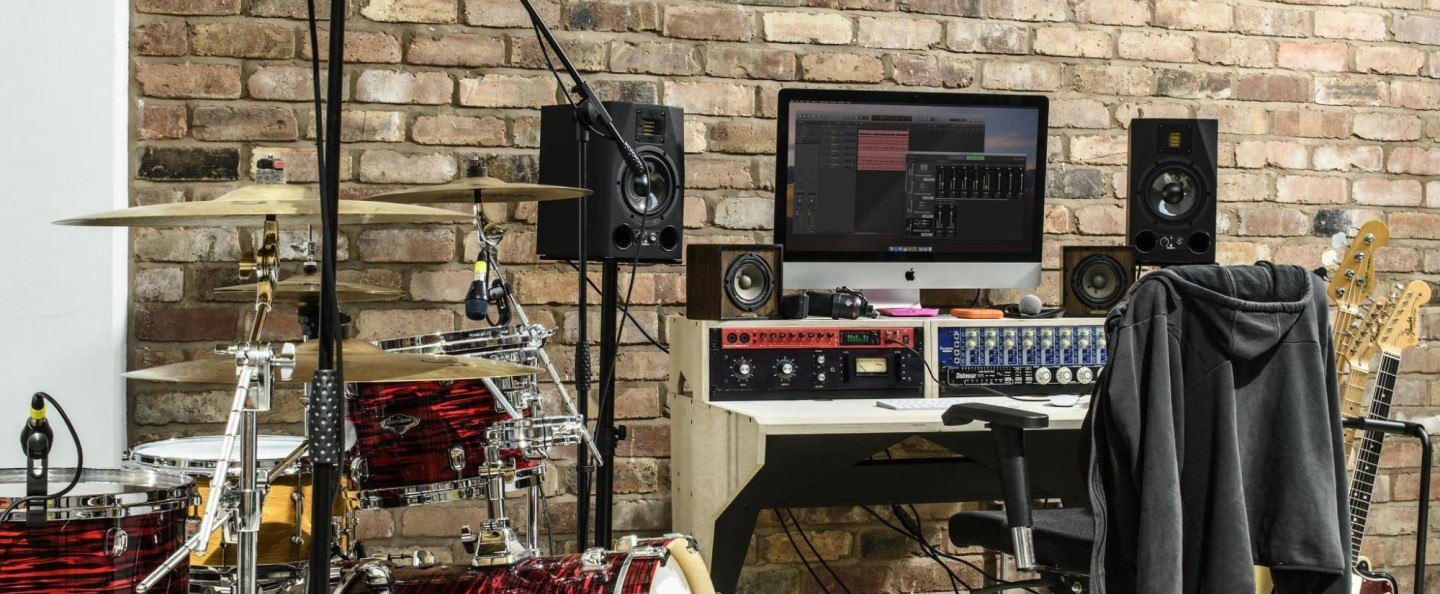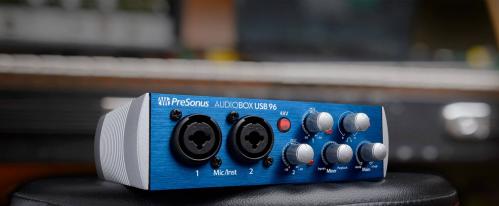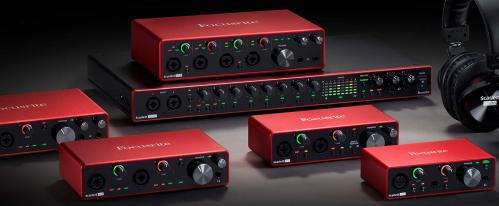As the new Focusrite Clarett+ is launched we take a look at what’s changed and how it compares to the Clarett USB and Scarlett interfaces
With the release of the new and improved Clarett+ range, we took some time to compare it with some of our other favourite Focusrite products in order to see whether or not you should upgrade your recording set-up.
Keep reading for detailed tech specs, find out what’s changed from previous models, and discover why we think the new Clarett+ range is worth the investment!
Focusrite Clarett+

The Focusrite Clarett+ range consists of 3 high-quality new interfaces - the Clarett+ 2Pre, Clarett +4Pre, and the Clarett+ 8Pre.
The Clarett+ 2Pre is a pure-sounding 10-in/4-out audio interface for recording artists and musicians, whilst the Clarett+ 4Pre is an 18-in/8-out audio interface aimed at the complete creator.
The Clarett+ 8Pre is a powerful studio-grade 18-in/20-out audio interface for the established producer who needs the best features and highest-quality components for their work.
Each of these interfaces is brimming with improvements and upgrades compared to the previous models - so let’s take a closer look at what’s new on the Clarett+ selection.
What's New?
The main difference between the Clarett+ and the previous generation of Clarett interfaces is the addition of improved independent A-D/D-A converters.
These converters unleash a superior level of audio clarity no matter if you’re working on home recordings or tracking in the studio.
A newly-added D-A converter yields even greater dynamic range than before - something that is especially noticeable on music with high dynamic variation. This is used in conjunction with a meticulously-designed output filter circuit, and the lower D-A converter noise floor allows users to identify intricacies within their mixes that were previously impossible to hear.
With more low-level detail and accuracy across a wider frequency range, everything sounds clearer and gives a more professional sheen compared to other similarly-priced interfaces.
The mic preamp performance here is awesome, too - the super-high headroom means your recordings have lower distortion and ultra-low noise levels regardless of if you’re tracking bass, guitar, drums, vocals, or anything else you could imagine.
The inclusion of the all-analogue Air (with impedance switching and relay control) is a great feature, emulating the ISA110 mic preamp from the classic Focusrite Studio Console. This is especially noticeable when recording things like vocals, adding an extra layer of presence and clarity.
In addition to this, the headphone outputs have been upgraded and offer greater DAC performance. This means that regardless of which headphones you use for monitoring purposes you can make better-informed decisions and inspire greater performances.
Each of the interfaces is expandable, with the +2Pre featuring ADAT input compared to the optical ADAT input on the +4Pre. The +8Pre has an additional optical ADAT output, too.

The Clarett+ range also features JFET instrument inputs - the Junction Field Effect Transistor component has a sound more akin to a tube than a typical transistor, so you can plug straight in and preserve the natural tone of your guitar as if it was going directly into an amplifier.
So, how does it compare to some of our other favourite Focusrite interfaces?
Clarett+ vs Clarett USB vs Scarlett
Compared to the Clarett USB, the Clarett+ has clearly made some noticeable improvements. In this table you can see exactly how these upgrades have affected the final product in terms of the dynamic range and the total harmonic distortion (+ noise) across each of the outputs and the mic inputs:

This extended range is infinitely more appealing to artists, producers, and engineers. The enhancements in terms of A-D/D-A conversion - as well as the improved preamp performance - lend themselves to greater sonic capabilities and a better overall music-making experience.
The Clarett USB range still has extremely competitive specs, by the way - but the Clarett+ edges it for those who are concerned with the finer details.
The Scarlett range, in comparison, is suited more to those who need a portable interface or are more conscious of their budget.
The dynamic range of the mic inputs on the Scarlett are 111dB A-weighted for the 3rd generation interfaces - a slightly lower range than is found on either of the Clarett models.
If you’re simply recording guitars and vocals, or even just voices (for a podcast, for example) then this might be ample range for your needs.
The Clarett range offers a more complete Air mode as it alters the input impedance of the preamp, therefore applying a different colour to the microphone.
With each of the Clarett models you’ll likely notice an improvement in latency when using things like effects and amp simulators, too - so keep this in mind if that is something that’s important to how you make music.
The Scarlett range of interfaces are still the best-selling in the world for good reason though, and they’ve been spotted amongst the set-ups of some of the most noted artists and producers imaginable - a Scarlett 2i2 can be spotted during Bo Burnham’s lockdown hit ‘Inside’, whilst Tyler, the Creator, Jay Watson (Tame Impala, Pond, Gum), Playboi Carti, and Misha Mansoor have all been pictured using them - spot the 2i2 at the back of this picture!

If they’re good enough for the professionals then they’re surely a worthwhile addition to anybody's rig.
So, why should you upgrade to the Clarett+?
Why Should I Upgrade?
As mentioned before, the Clarett+ is certainly the best-in-class here as far as specifications, components, and overall quality are concerned.
The hardware improvements alone certainly make it an attractive option as you’re guaranteed an industry-leading interface with an awesome sound - the extra headroom and ultra-low noise make recording with the Clarett+ range a breeze, and the extended range of the outputs leads to greater detail within every mix that you produce.
The analogue performance of the Clarett+, particularly on the +4Pre and the +8Pre, makes it feel very much worth the investment if you’re in the market for a new interface.

Beyond this though, each of the new Clarett+ audio interfaces also runs on super-solid driver software for both PC and Mac, offering a cross-platform compatibility that isn’t available on many other interfaces.
Furthermore, they come with a selection of industry-standard software so that you have access to everything you might need to start creating straight away.
Whether you need plug-ins or virtual instruments, between Focusrite Control and the Focusrite Plug-in Collective you’ll have all bases covered.

Focusrite Control is an intuitive piece of software for computer and iOS devices that provides total control when using Clarett+. The Focusrite Plug-in Collective allows users to register and receive regular discounts and exclusive versions of the most innovative software titles, so you’ll always be kept up-to-date with what’s new in the production community.
Click here to take a closer look at the entire Clarett range and dive into the specs of each model individually:
Still not sure which audio interface is best for you? Need some extra help with setting up a Clarett+ interface? Call us on 0151 448 2089 or check out your local store to speak to one of our Experts about your needs.




